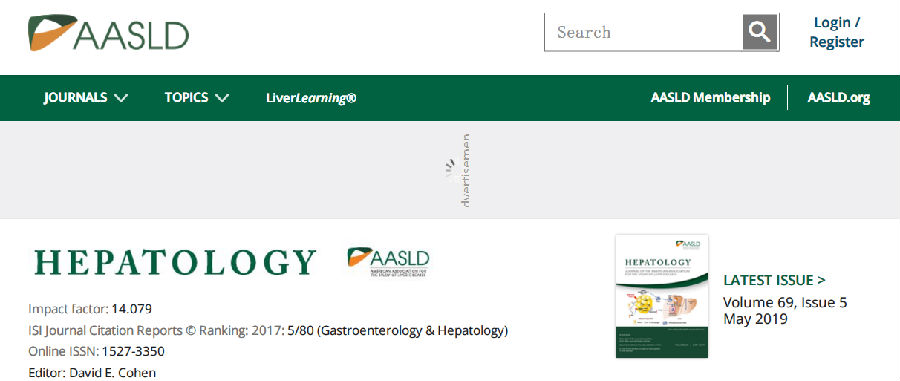
Recently, the team led by Prof. Tang Hong from the Infectious Diseases Center of our hospital and the Lab of Infectious Diseases, the State Key Laboratory of Biotherapy, released the research paper Exosomal IFITM2 Transmitted to DCs Inhibits IFNα Pathway Activation and Blocks Anti-HBV Efficacy of Exogenous IFNα on Hepatology, the world-known hepatology periodical, with the impact factor of 14.079. The first author is Shi Ying, a doctoral candidate from the State Key Laboratory of Biotherapy, the co-first author is Doctor Du Lingyao, and the corresponding author is Prof. Tang Hong. Sichuan University is the institution of the first author and corresponding author.
Currently, there are 24 million HBV infected patients in the world; however, only the interferon (IFN) and the Nucleos(t)ide analogues (NUC) are available for clinical treatment of chronic hepatitis B (CHB). The intrahepatic immune response is restrained by the negative regulators in the IFN signal transduction pathway, leading to unsatisfactory response of many patients to the IFNα therapy. In this research, the researchers downloaded and analyzed the gene expression data of hepatic tissue of the CHB patients with different responses to IFNα, discovering that the immune related pathway was relevant to the therapeutic response from the CHB patients to IFNα. The movement of IFITM2, the mediation of exosome to the dendritic cells, restrained the synthesis of endogenous IFNα and caused the responsive obstruction in the IFN pathway in the processing of exogenous IFNα. The baseline level of IFITM2 mRNA was higher, while the IFNα mRNA level in the PBMC of CHB patients under IFNα treatment was lower. In the serum of the patients with suboptimal response, the rising IFITM2 protein level was also found.
In addition, the researchers demonstrated that the mutation of the palmitoylation inhibitors and the 70/71 locus of the IFITM2 proteins both affected uptake by exosome. The research result has explained CHB patients’ pathogenetic mechanism to the insufficient response to the IFNα therapy, and provided a new way for such clinical issue. It is hopeful to design some corresponding drugs to enhance CHB patients’ response to the IFNα therapy through this target spot, thus further increasing the current antiviral therapy effect for hepatitis B viruses.